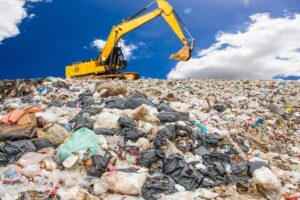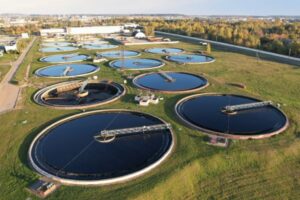The Science of Sustainable Fuel: Decoding Hydrothermal Liquefaction (HTL)
In the quest for sustainable energy, one of the most persistent challenges has been finding an efficient way to convert wet organic waste into a usable, high-density fuel. Historically, this has involved energy-intensive and costly drying processes, making many potential feedstocks uneconomical. Enter Hydrothermal Liquefaction (HTL)—a cutting-edge thermochemical process that leverages the power of water to revolutionize how we create renewable fuels. At Clean Stream Fuels, HTL is a core technology, and understanding its science reveals why it is a game-changer for waste-to-energy solutions.
The Core Science: What is Hydrothermal Liquefaction?
The term “hydrothermal” is key to understanding the process. It refers to the use of heated water under high pressure. In an HTL reactor, biomass (organic matter) is exposed to water at subcritical or supercritical conditions—typically temperatures ranging from 250°C to 370°C and pressures of 10 to 25 MPa (100 to 250 atmospheres). Under these specific conditions, water behaves as a powerful solvent and a reactant, capable of breaking down complex organic molecules.
Unlike other biomass conversion methods like pyrolysis, which requires dry feedstock and operates at much higher temperatures, HTL is designed for wet waste. This is its central advantage. The high pressure keeps the water in a liquid or near-liquid state, preventing it from turning to steam. In this state, the water’s unique properties facilitate the rapid decomposition of biomass into smaller, more stable, and energy-dense hydrocarbon molecules. Essentially, HTL mimics the geological process of crude oil formation, but accelerates it from millions of years to a matter of minutes or hours.
The Feedstock Advantage: HTL’s Versatile Diet
One of the most compelling aspects of HTL is its ability to efficiently process a wide range of moisture-rich organic wastes that are often difficult and costly to manage. This versatility is what makes it so valuable for a circular economy. Suitable feedstocks for Clean Stream Fuels’ HTL technology include:
- Municipal Sewage Sludge: A consistent and voluminous waste stream from wastewater treatment plants that is a major disposal challenge.
- Food Waste: Scraps from restaurants, grocery stores, and residential collection programs.
- Agricultural Residues: Manures, slaughterhouse waste, and other high-moisture farm byproducts.
- Industrial Effluents: Wastewater solids from food processing, brewing, and other manufacturing facilities.
- Algae and Aquatic Biomass: A renewable feedstock with high water content that is perfectly suited for HTL.
By leveraging these diverse, locally available waste streams, HTL avoids the energy and capital expenses of drying, resulting in a more efficient and economically viable process for producing sustainable fuels.
The End Products: Biocrude and Beyond
The primary and most valuable output of the HTL process is a renewable biocrude oil. This biocrude is a stable liquid at room temperature and is energy-dense, making it a powerful replacement for fossil fuels. Its chemical properties are notably similar to conventional crude oil, giving it a significant advantage over other bio-oils by making it easier to refine into existing fuel infrastructure. This allows it to be processed into high-quality, sustainable transportation fuels like green diesel, gasoline, and jet fuel.
Beyond the biocrude, HTL produces two other valuable outputs:
- An Aqueous Phase: This water-rich stream contains dissolved organic compounds and can be treated and recycled back into the process, further enhancing efficiency and water use.
- A Solid Residue (Hydrochar): This nutrient-rich carbonaceous solid is a beneficial co-product. It can be used as a soil amendment, a renewable solid fuel, or a feedstock for activated carbon production.
Why HTL is a Game-Changer for Sustainable Energy
Hydrothermal Liquefaction represents a significant leap forward in waste-to-energy technology. Its ability to efficiently transform challenging wet waste into a high-quality, refinable biocrude distinguishes it from other solutions. By offering a clean, flexible, and resource-efficient method for biofuel production, HTL provides a critical pathway for municipalities and industries to reduce their environmental footprint, achieve energy independence, and create a truly circular economy.
At Clean Stream Fuels, our expertise in HTL technology allows us to turn what was once a liability into a sustainable asset, converting waste into the fuels of the future. The science is clear, and the benefits are immense.
To learn more about how our HTL technology can be implemented for your waste stream or to discuss your sustainability goals, contact our expert team today.
#HTL #HydrothermalLiquefaction #SustainableFuel #Bioenergy #CleanTech #BiomassConversion #WasteToEnergy #CleanStreamFuels



